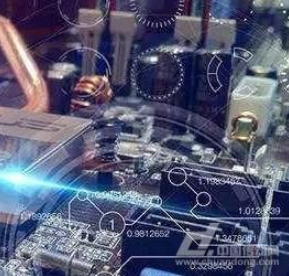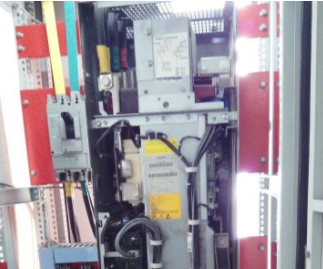Inverter maintenance safety precautions
Date:2019-07-11 origin:RCCN Visit:7483
1. Determine the fault range of the inverter
In the actual experience of maintenance, generally in the absence of metal cable connector inverter circuit schematic, the inverter is mostly caused by the damage of the main circuit electronic components. For the main circuit part, first determine the fault range, power on the inverter, and measure whether the DC bus voltage value is equal to 1.35 times the effective value of the input voltage. If the voltage is normal, it can be judged that the inverter part is faulty, otherwise the components such as the rectified power component, the pre-charging circuit or the filter capacitor may be damaged.
For a few inverters with contactors inside, the contactor is the pre-charging part of the DC bus. The start-up is started by the inverter after the power is turned on, and the contactor is activated after the self-testing no-fault alarm signal and the given “start” signal. If the contactor does not start without the DC bus voltage, the fault range cannot be determined. Firstly, simulate the “no fault” feedback signal and the external start signal of the given inverter part, artificially let the contactor pull in, measure the DC bus voltage, and judge the fault range according to the DC voltage. The method is the same as above. Note that the signal given is sometimes a pulse trigger signal rather than a level signal before the precharge contactor is activated.
2. Rectifier unit static detection
The method for judging the damage of a power component of the rectifying part is to utilize the unidirectional conductivity of the rectifying element. When the positive and negative resistance values are normal under static conditions, the specific method is as follows:
The three-phase bridge rectifier circuit of the rectifying part may be diode rectification, thyristor half-controlled rectification, thyristor full-controlled rectification or igbt rectification. In either case, the three-phase rectifier circuit is symmetrical, and the static test resistance value should conform to the principle of symmetry, that is, the static three-phase input or output terminal should be symmetric with respect to the DC bus positive and negative positive and negative test values. Select the "diode" file of the multimeter.
(1) In the first step, connect the red test lead to the DC bus positive pole, and the black test pen to the power input three-phase terminal. The three test values should be the same. In turn, the black test pen is connected to the DC bus positive pole, and the red test pen is connected to the input power three-phase wiring. The three test values should also be the same. If the diode rectifier bridge is used for rectification and conduction, the multimeter displays 0.4~0.6v, and when it is reversed, it shows infinity. If the three-phase measurement value has a large deviation, or if the positive and negative measurement values of a phase are similar or the same, the diode element is damaged.
(2) In the second step, connect the red test lead to the DC bus negative pole, and the black test pen is connected to the input power three-phase wiring. The three test values should be the same. In turn, the black test pen is connected to the DC bus negative pole, the red test pen is connected to the input power three-phase wiring, and the three test values should be the same. For the pre-charge circuit designed behind the rectifier bridge, the operation can be judged the same. The rectifier component is good or bad in the negative half cycle of the rectifier bridge (for the 12-pulse rectifier bridge test method as above).
Note: For the pre-charging circuit design before the rectifier circuit, it is controlled by thyristor half-control or full-controlled bridge. The test result should have one phase and the other two-phase positive and negative resistance test values are different, that is, one phase is actually The resistance value of the diode precharge circuit tested.
3. Inverter unit static detection
The principle of three-phase inverter bridge triggered by 6-pulse is also to use a freewheeling diode in parallel in each inverter igbt module. There is unidirectional conductivity under static. The measurement method is the same as the rectifier bridge detection method, that is, the DC bus is positive. The negative pole compares the test values of the three-phase output points, and the three-phase test values should be the same. When the component is single-phase turned on, the multimeter displays 0.3~0.4v, and when the reverse is turned off, it shows infinity. A main circuit short circuit fault may also be caused by an abnormality in the varistor that protects the power component, causing frequent damage to the power components.
4. Control circuit detection
The detection method of the control circuit takes acs800-04 as an example. After the inverter is powered on, observe that the signal light on the aint main board v204 is green and the light is +5v normal, v309 is red, indicating that the protection is in the on state, and the v310 is green, indicating the igbt gate. The drive is normal. The red light on the rmio external signal interface board indicates a fault, and the green light indicates that the power supply +24v is normal. Finally, use an oscilloscope to detect whether the trigger pole of each power component has a trigger signal. Generally, there is a 5v voltage trigger. A circuit board without a signal lamp (rint main circuit interface board, rrfc filter board, rvar varistor board, etc.) can statically test the resistance value of the component that may be damaged, make a rough judgment, and do not try to change the same type of circuit board. Normally, the green light on the control panel should be normal, and a red light indicates a fault.
5. Common fault detection
The control circuit often has more faults on the power board. Check that the output should have +24v, +5v, ±15v or ±12v. If the voltage of a phase is abnormal, check the power supply load and the power board itself. The "overcurrent alarm" signal should check the igbt module or current sensor section. Hall current sensor power supply is generally dual power supply, its output is 0 ~ 10v or 4 ~ 20am standard signal, with changes in load current; if there is "high temperature alarm" is usually a fan failure or temperature measurement component damage, (copyright The temperature measuring component is generally installed on the heat sink or built in the igbt module. It usually adopts a negative temperature coefficient (ntc) resistance, and the high resistance value is tested under normal temperature static test; if the "DC bus overvoltage" signal appears, the power should be checked. The voltage, voltage transformer and brake chopper parts often occur due to unstable load operation; some DC power supplies working inside the inverter have two paths, one is the input input voltage step-down rectification, and the other is the sampling DC bus voltage. Obtained by series resistance buck or DC chopping.
Safety should be paid before the maintenance work. It is best to have someone to supervise to ensure the safety of the person and equipment. Do not artificially expand the fault. Do not connect the input and output terminals of the inverter, otherwise the inverter will be damaged directly. During the maintenance process, please note that there will be high voltage on the DC bus after the inverter is powered off. Wait for more than 5 minutes before touching, or manually discharge the capacitor. Capacitor discharge standard safety operation, after the power is discharged, the operation can continue; when the inverter is in the power-on standby state or has been started at a given zero-speed state, its output terminal has a DC voltage of about 200v relative to the ground. Please pay attention to personal safety; When testing the control board, it is best not to touch the pins of the integrated chip on the board to prevent static damage to the integrated chip and cause unnecessary loss.
Related articles
-

Inverter maintenance safety precautions
The AC-DC-AC inverter firstly filters the three-phase AC power and converts it into DC power through the bridge rectifier circuit. After filtering, the DC power is converted from the bridge inverter c
-

Inverter maintenance safety precautions
The AC-DC-AC inverter firstly filters the three-phase AC power and converts it into DC power through the bridge rectifier circuit. After filtering, the DC power is converted from the bridge inverter c
















 RCCN WeChat QrCode
RCCN WeChat QrCode Mobile WebSite
Mobile WebSite